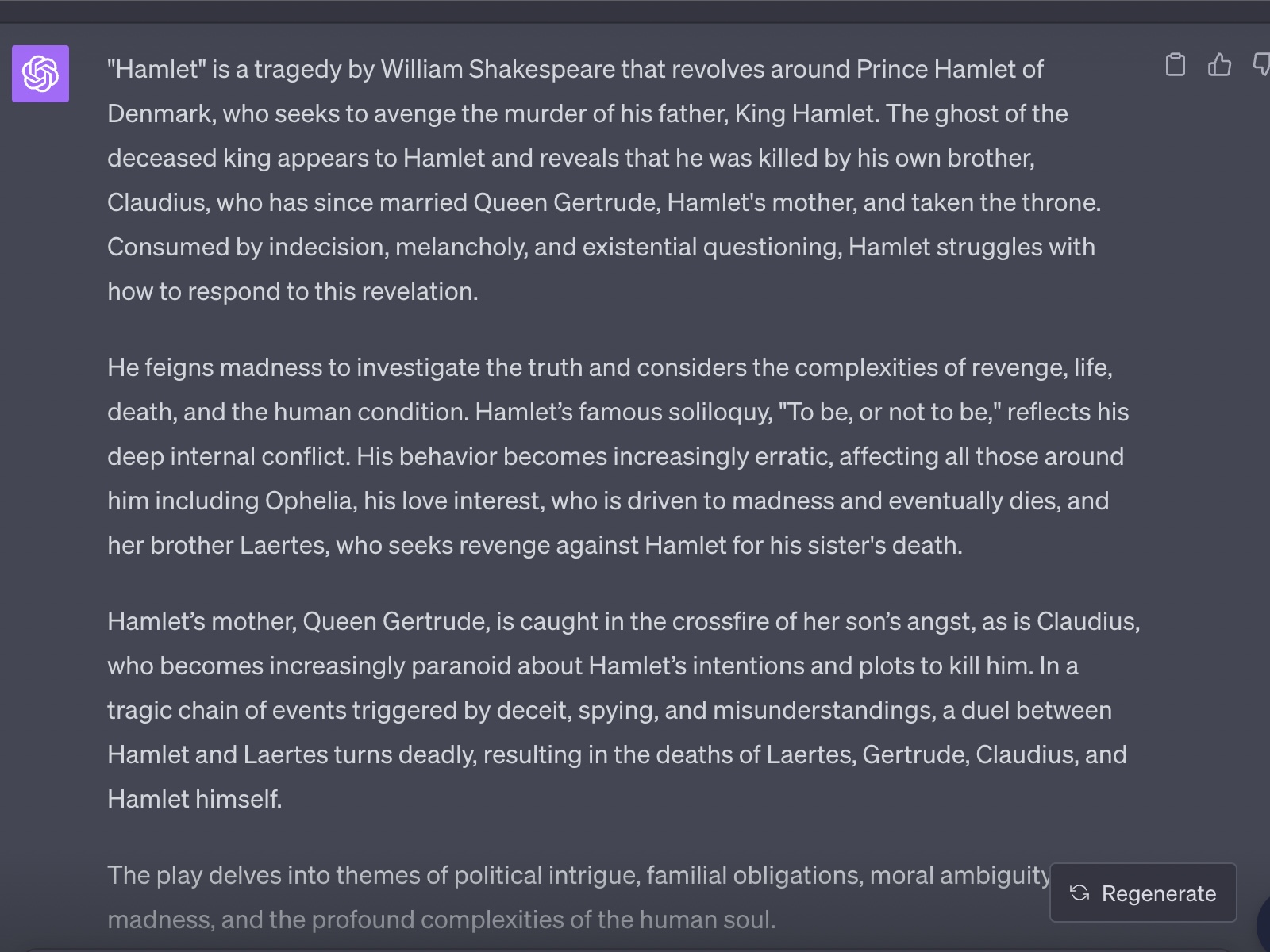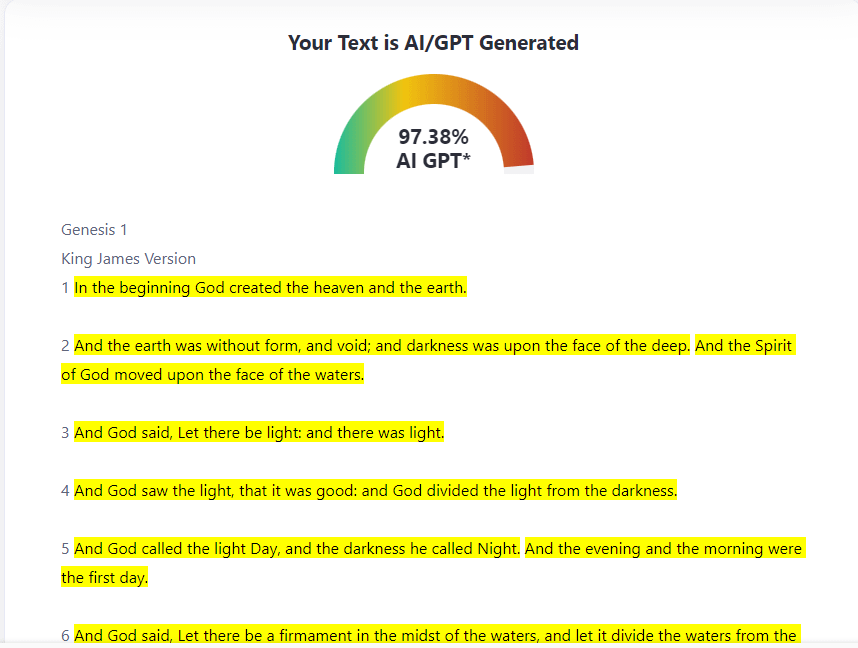Teachers cannot directly detect ChatGPT usage. They may suspect it if the writing style seems inconsistent with the student’s usual work.
ChatGPT has become a popular tool for students seeking help with writing assignments. While it offers quick and coherent text generation, teachers are growing wary. They may notice discrepancies in writing style or vocabulary level, raising suspicions. To maintain academic integrity, students should use such tools responsibly.
Relying too heavily on AI-generated content can hinder learning and skill development. Teachers can encourage students to focus on their personal writing growth. Using ChatGPT as a supplementary tool rather than a primary source can be beneficial. Proper guidance and honest effort are crucial for genuine academic success.
The Rise Of Chat Gpt
Chat GPT has transformed communication and learning. This AI model offers new possibilities. It brings both opportunities and challenges, especially in education. Teachers are curious about its impact. Can they detect its use among students? Let’s explore the rise of Chat GPT.
What Is Chat Gpt?
Chat GPT is an AI language model. It generates human-like text. OpenAI developed it to understand and produce language. Chat GPT can respond to prompts, create stories, and answer questions. It uses machine learning and vast data to predict the next word in a sequence.
Chat GPT is helpful in many fields. It assists in customer service, content creation, and more. The model learns from diverse text sources. It improves its responses over time. This makes it a powerful tool for various applications.
Popularity In Education
The popularity of Chat GPT in education is growing. Students use it for homework, essays, and projects. It provides quick answers and generates content. This can save time and enhance learning. But, it also raises concerns among teachers.
Teachers worry about academic honesty. They question if students rely too much on AI. Detecting Chat GPT use is a challenge. Some tools help identify AI-generated text. But, the technology is evolving fast. This makes detection harder.
| Advantages | Challenges |
|---|---|
|
|
Teachers need to adapt. They must find ways to integrate AI responsibly. Educating students about ethical use is crucial. Encouraging original work remains important. This balance will shape the future of education with Chat GPT.
Potential For Misuse
The rise of AI tools like Chat GPT has potential for misuse. Students might use it to gain unfair academic advantages. This can negatively impact educational integrity.
Cheating In Assignments
One major concern is cheating in assignments. Students may use Chat GPT to generate essays or solve problems. This undermines their learning process.
Teachers face challenges detecting AI-generated content. Here are some indicators:
- Consistent writing style changes
- Complex vocabulary beyond student’s usual level
- Unrelated or off-topic content
These signs can help teachers spot potential misuse. But identifying AI use is still difficult.
Academic Dishonesty
Academic dishonesty involves more than just cheating on assignments. It includes plagiarism and falsifying data. Chat GPT can facilitate these unethical practices.
To combat this, educators can:
- Use plagiarism detection software
- Encourage original thought and creativity
- Implement strict academic honesty policies
Schools must adapt to these new challenges. Only then can they maintain academic integrity.
Detection Techniques
Teachers need ways to detect content made by AI tools like Chat GPT. These methods help ensure that students’ work is genuine. Two primary techniques are often used: Plagiarism Checkers and AI Detection Tools.
Plagiarism Checkers
Plagiarism checkers compare student work to existing texts. These tools find copied content. They highlight sentences that match other sources. Popular tools include Turnitin and Copyscape.
| Tool | Features |
|---|---|
| Turnitin | Compares text with academic papers and websites |
| Copyscape | Checks against web content |
Ai Detection Tools
AI detection tools specifically look for AI-generated text. These tools analyze writing patterns. They identify if a machine created the content. Tools like GPTZero and AI Detector are used.
- GPTZero: Examines text for AI patterns
- AI Detector: Scans and flags AI-generated content
Combining these tools helps teachers ensure work is authentic. They help maintain academic integrity. Students must learn and not rely on AI for their work.
Teacher Awareness
Teachers need to be aware of tools like Chat GPT. These tools can generate content that seems human-written. Knowing how to spot AI-generated content is crucial. This helps maintain academic honesty and ensure genuine student work.
Recognizing Ai-generated Content
AI-generated content often has specific traits. Teachers can look for the following signs:
- Repetitive phrases: AI might repeat certain phrases.
- Lack of personal touch: AI writing lacks personal experiences.
- Too perfect grammar: AI-generated text often has flawless grammar.
- Inconsistent style: AI can struggle with maintaining a consistent writing style.
Recognizing these traits helps in identifying AI-written content. Teachers can then take appropriate steps.
Training And Resources
Providing teachers with the right training is essential. Here are some resources that can help:
| Resource | Description |
|---|---|
| Workshops | Hands-on training on spotting AI content. |
| Online courses | Courses that teach about AI and its implications. |
| Guides | Written guides on identifying AI-generated text. |
These resources empower teachers with the knowledge they need. With proper training, teachers can better detect AI-generated content.
Challenges In Detection
Detecting AI-generated text poses significant challenges for teachers. The sophistication of AI models like Chat GPT makes this task even harder. Teachers need reliable tools and methods to identify AI-written content. Let’s explore some of the key challenges.
Sophistication Of Ai
Modern AI models like Chat GPT are incredibly advanced. These models produce text that mimics human writing very closely. The generated text is coherent, relevant, and contextually accurate. This makes it difficult for teachers to detect AI-written work.
AI models continuously improve through machine learning. They learn from vast amounts of data, which enhances their ability to generate realistic content. This evolving sophistication makes detection an ongoing challenge.
Limitations Of Current Tools
Current tools to detect AI-generated text have limitations. Many detection tools rely on specific patterns or markers. These markers are not always present in AI-generated content. This reduces the effectiveness of such tools.
| Tool | Limitations |
|---|---|
| Plagiarism Checkers | Cannot detect original AI-generated text. |
| AI Detectors | Often produce false positives or negatives. |
Teachers may also face challenges due to the lack of training in using these tools. They need proper guidance to effectively use AI detection software.

Credit: contentatscale.ai
Ethical Considerations
As teachers navigate the digital age, detecting AI-generated content like Chat GPT poses ethical challenges. This section explores these concerns.
Privacy Concerns
Privacy is a major issue. Teachers must respect students’ privacy rights. They should avoid intrusive methods to detect AI use. Instead, educators can focus on teaching responsible AI usage. This approach respects student privacy and promotes ethical behavior.
Balancing Trust And Verification
Trust is essential in education. Over-policing can harm the student-teacher relationship. Teachers need to find a balance. Verification methods should be fair and transparent.
| Aspect | Consideration |
|---|---|
| Trust | Foster a positive learning environment |
| Verification | Use clear and consistent policies |
| Privacy | Respect students’ personal boundaries |
- Trust: Encourage honest communication.
- Verification: Implement fair assessment strategies.
- Privacy: Protect students’ data and identity.
Case Studies
Exploring real-world examples helps understand if teachers can detect Chat GPT. This section dives into specific case studies that shed light on this topic.
Real-world Examples
Many schools have started using Chat GPT in classrooms. Teachers and students share their experiences. Let’s look at two examples.
| School | Experience | Outcome |
|---|---|---|
| Greenwood High | Chat GPT used for essay writing | Teachers detected AI-generated content |
| Sunnydale School | Chat GPT used for science projects | Teachers found it difficult to detect |
Lessons Learned
These case studies provide valuable insights. Here are some key lessons:
- Teacher Training: Teachers need training to spot AI content.
- Student Honesty: Encourage students to be honest about using AI.
- Tech Tools: Use tools to detect AI-generated text.
Understanding these lessons helps improve the use of Chat GPT in education. Teachers can better prepare and guide students.

Credit: www.reddit.com
Future Of Ai In Education
The future of AI in education is bright. AI tools like Chat GPT are transforming classrooms. Teachers are curious about detecting AI usage. This change brings both challenges and opportunities.
Evolving Technologies
New AI technologies emerge every day. These tools help in teaching. They assist in grading and personalized learning. AI can identify student needs. It provides real-time feedback.
Teachers can use AI to create engaging lessons. They can focus more on students. AI handles repetitive tasks. This saves time for more important teaching activities.
Preparing For The Future
Schools must prepare for AI integration. Training teachers is crucial. They need skills to use and detect AI. Proper training ensures effective AI use in education.
Creating AI-friendly curriculums is important. Students should learn about AI. This knowledge prepares them for the future. Understanding AI empowers them.
| Benefits of AI | Challenges |
|---|---|
| Personalized learning | Teacher training |
| Real-time feedback | AI detection |
| Engaging lessons | Ethical concerns |
Teachers should stay updated on AI trends. They can join workshops and courses. Networking with other educators helps too. Sharing experiences can lead to better AI use in classrooms.

Credit: contentatscale.ai
Frequently Asked Questions
Can Teachers Know If I Use Chatgpt?
Teachers might not directly detect ChatGPT use. They can spot unusual writing styles or inconsistencies. Always review and edit outputs.
Can Someone Tell If I Use Chatgpt?
It’s difficult for someone to tell if you use ChatGPT. The responses blend naturally with human writing.
Can Colleges Tell If You Use Chatgpt?
Colleges can’t directly detect ChatGPT use. They may notice unusual writing patterns or discrepancies in your work.
Can Students Get Caught Using Chatgpt?
Yes, students can get caught using ChatGPT. Teachers use plagiarism detection tools and can recognize AI-generated content. Always use it responsibly.
Conclusion
Teachers can indeed detect Chat GPT usage with careful observation. Signs include inconsistencies in writing style and context. Educators must stay informed about AI advancements. Promoting honest academic practices is crucial. By combining technology with traditional methods, teachers can better identify AI-generated content.
This ensures a fair learning environment for students.


Leave a Reply